





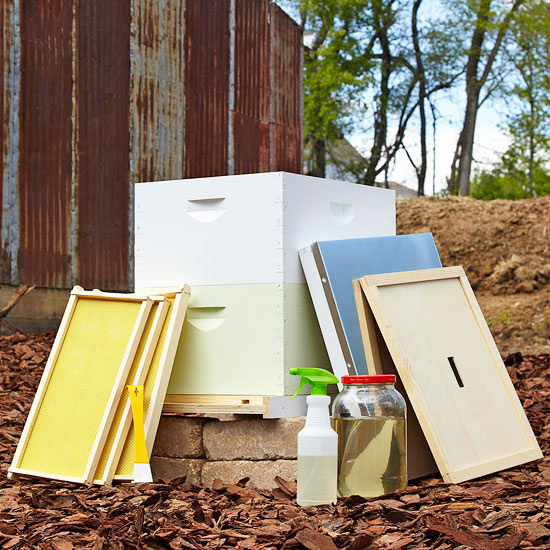
All the essential equipment, including hive parts, the smoker, and the hive tool, came in a kit purchased online from a mail-order supplier. It's best to start with new equipment to avoid any hidden problems.
Approximately 10,000 bees were provided by a local beekeeping supplier and transported in a wooden box -- slightly larger than a shoebox with a mesh screen.
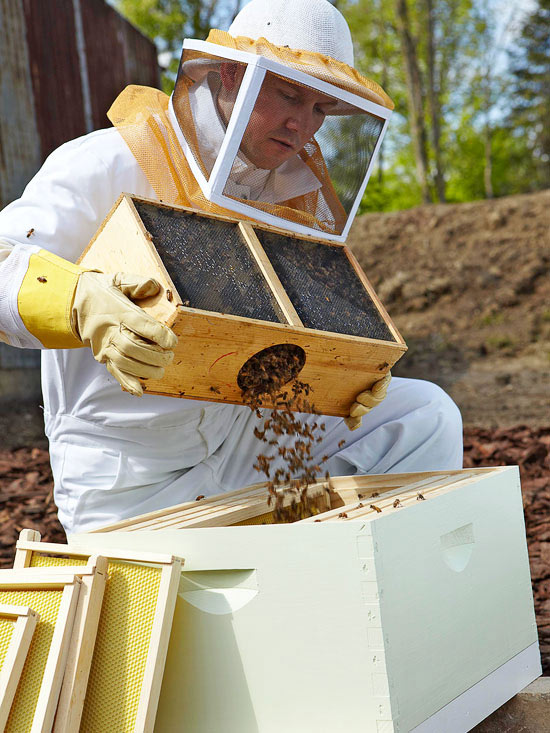
Removing a few frames from the brood box makes room for the bees. Spraying the bees with sugar water was important to calm and prepare them for their transition into the hive. With a few firm shakes of the brood box, most of the bees will make their way into their new home.
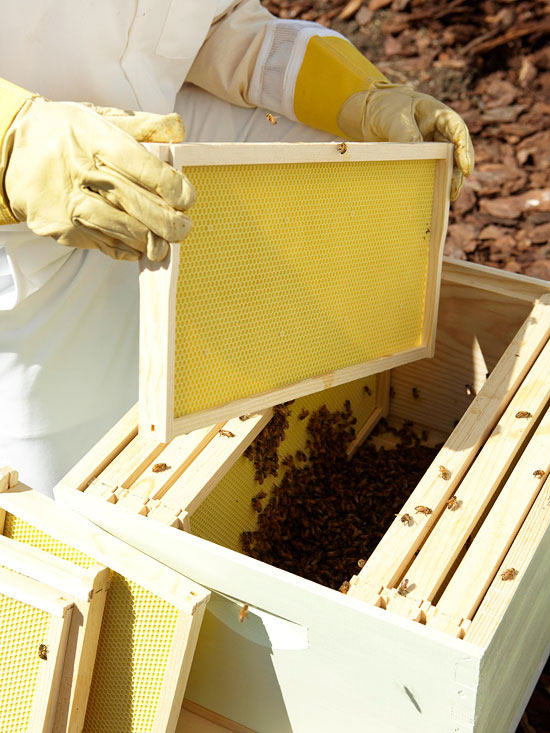
Place the last of the frames into the box.
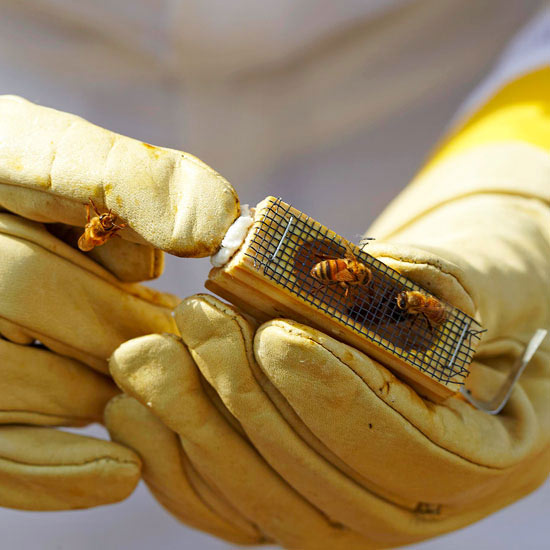
A plug in one end of the queen's cage is replace with a bit of marshmallow, ensuring that the worker bees will eat the treat while being exposed to the queen's pheromones and will learn to accept her before they release her. The cage is hung between two frames in the middle of the wooden box.
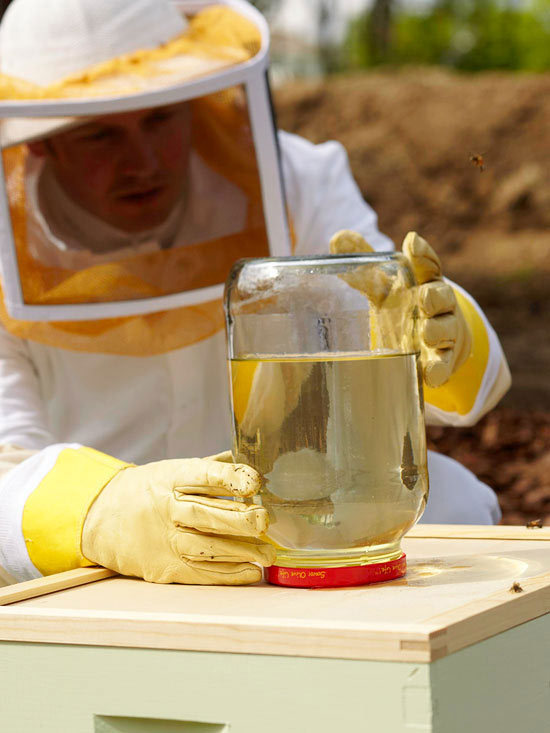
The inner cover is set on top of the brood box. Feeding the bees with a 2:1 sugar-water solution is essential while they set up house. Tiny holes in the jar lid give the bees access to the liquid. Continue to feed them until they stop using the sugar-water solution and depend on the neighborhood's spring nectar flow instead.
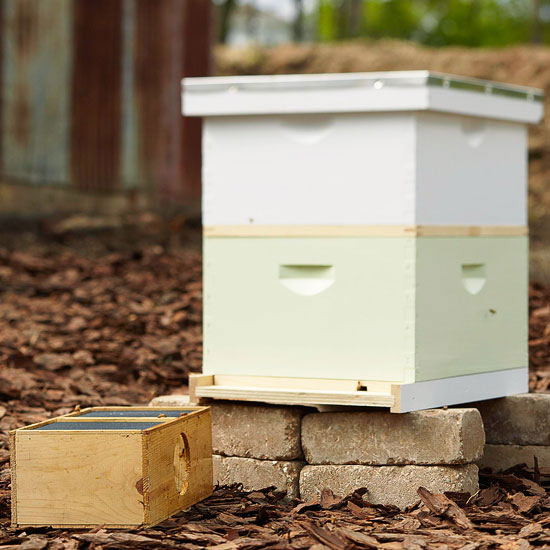
A second deep box shelters the feeder. Once the top of the hive is set in place, it is time to leave the bees on their own for three to five days. Return then to make sure the queen has been released.
New to beekeeping? Learn the basics!
Copyright © www.100flowers.win Botanic Garden All Rights Reserved